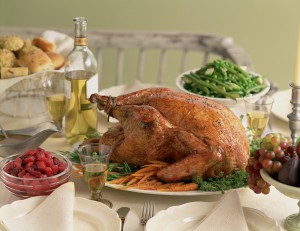FEATURED ARTICLES
- Details
- Written by Lisa Jillanza
Health experts are constantly conducting research and learning more and more about the benefits of exercise for the elderly. Sedentary adults are more likely to suffer from heart disease, diabetes, high blood pressure, certain cancers, and joint and muscle disorders.

To help ward off these conditions and to deal with the everyday wear and tear that aging has on our bodies, experts suggest that individuals over the age of 50 should consult their physician and a personal trainer to come up with a fitness plan that works for them.
Another condition that exercise for the elderly has proven to help is the arthritis-striken.
The appropriate exercises can reduce inflammation and relieve stiffness in those particular joints. It also increases flexibility, muscle strength, power and stamina.
Elderly adults who exercise also gains the benefits that their younger counterparts also gain including: weight control, the ability to manage daily stress and improved self-confidence.
Experts have also found that exercising as you age can also reduce the risk of premature death, can curb depression and minimizes the development of brittle bones.
- Details
- Written by Lisa Jillanza
Eating Healthy
- One good thing about the nutritional value of turkey is that it is very low in fat and high in protein.
- It is also a good source of iron, zinc, phosphorus, potassium and B vitamins.
- Turkey is also naturally low in sodium. It typically contains less than 25 milligrams (mg) of sodium per ounce on average.
- The meat fiber in turkey is easier to digest than other types of meat, so that makes turkey a good choice for individuals that have digestion problems.

Recipe: Turkey Chili
- 2 cups chopped onion
- 4 garlic cloves, chopped fine
- 1 cup chopped green pepper
- ¼ cup olive oil
- 2 (35 oz.) cans stewed tomatoes, crushed
- 2 (15 oz.) cans kidney beans, drained
- 2 tablespoons tomato paste
- ¾ cup chicken or turkey stock
- 2 tablespoons chili powder
- 1 tablespoon ground cumin
- 1 tablespoon dried hot red pepper flakes
- 1 teaspoon dried oregano
- 1 tablespoon salt, plus more if desired to taste
- ½ teaspoon black pepper
- 3 to 4 cups shredded, cooked turkey meat
- Sugar
- Shredded cheddar cheese, chopped red onion, sour cream for optional garnishes
In a large, 8-quart thick bottom pot, cook the onion and green pepper over medium heat, stirring until golden, about 5 minutes. Add the garlic, chili powder, cumin, and red pepper flakes, and cook, stirring, for a minute or two more. Add a bit more olive oil if needed. Add tomatoes, tomato paste, stock, beans, oregano, salt, pepper and cooked turkey meat. Bring mixture to a simmer and reduce heat to low. Simmer, uncovered for an hour.
Salt to taste. Add 1 to 3 tablespoons of sugar to take the edge off the acidity of the tomatoes, if desired.
Serve with shredded cheddar cheese, chopped red onion or sour cream. Serve alone, over rice or with corn bread.
- Details
- Written by Lisa Jillanza
Awareness 101
If you have been wondering why all of the men in your life seem to be sprouting more and more facial hair these days, wonder no more : it's Movember! (Also known as No Shave November.)

The meaning behind Movember is raise awareness for prostate cancer and testicular cancer and began in Australia more than 11 years ago. Males participating not only talk about why they are participating but also get other men to start talking about men's health and cancer awareness. Men participating are also encouraged to donate what they would otherwise spend on grooming/shaving to the American Cancer Society.
Don't worry, ladies, you are encouraged to participate as well, you can forego shaving your legs or cancel the waxing/threading appointment that you have planned for the month.
- Details
- Written by Lisa Jillanza
Fall can be time for festivals, pumpkin patches, get togethers, football games and many more events where food plays a huge role in the activities of the day. If you are like most people you want to watch what you eat during the fall season, as you know that the holidays are just around the corner : which means more overeating!
But, even though fall is synonymous with fattening foods there are some fall food items that can actually help you to slim down.

One of these foods is the apple. Apples are low in calories and high in fiber (95 calories and 4 grams of fiber per medium fruit) and are great tasting! In a recent study, dried apples have been found to help people lose weight and lower their cholesterol.
Another great fall slimming food is the squash (and who doesn't love squash from butternut to acorn?) Just one cup of cooked squash packs 214 percent of the recommended daily value for vitamin A and a third of your recommended daily dose of vitamin C. Squash are also only 80 calories per cup :compared to its more fattening fall friend the sweet potato at 180 calories per cup.
A good way to add squash to your existing soups and stews is to puree the squash, so you are adding texture and creaminess to your food, without adding all of the extra calories.
Broccoli is another great fall slimming food : a cup of broccoli is just 31 calories and 2.4 grams of fiber. Plus experts say that when you add fresh vegetables to any food you tend to eat fewer calories so you can add broccoli to virtually any meal to decrease your caloric intake.
Lastly, there is kale. These days dark, leafy vegetables like kale are the go-to when you are talking about healthy foods. Kale is packed with vitamin A, loads of fiber and isothiocyanates that help your body to detoxify.
- Details
- Written by Lisa Jillanza
Those people looking to understand what dieticians are talking about when they compare good fats to bad fats will not find these terms on food labels. Instead you will see words like polyunsaturated and trans fats. Here is a brief explanation of those fats and how they affect your body.

Saturated Fats
Saturated fats are the fats that stay solid at room temperature, such as lard, coconut oil and cow butter. Saturated fats are what dieticians consider “bad fats” because they raise your bad cholesterol level, thereby raising your total cholesterol level. People whose diet consists of many foods high in saturated fats typically are at a higher risk of heart attack, stroke and cardiovascular disease.
Monounsaturated Fats
Monounsaturated fats have a lower melting temperature than saturated fats, which means that they do not stay solid at room temperature. These types of fats can be found in: peanut oil, olive oil, nuts and avocados. Monounsaturated fats are what dieticians consider the“good fats” that lower bad cholesterol without lowering your levels of good cholesterol. In addition, monounsaturated fats help to prevent against cardiovascular disease.
Polyunsaturated Fats
Polyunsaturated fats are fats that can stay liquid even at lower temperatures, such as corn oil and sunflower oil. Polyunsaturated fats are also found in soybeans, fish, fish oil and in grain products.Dieticians consider polyunsaturated fats the “good fats” as they lower cholesterol and they help prevent cardiovascular disease by lowering the amount of fat in the blood.
Trans Fats
Trans fats are man-made fats that are created during the hydrogenation process. These types of fats are unnatural and toxic to your body. Trans fats are abundant in packaged and processed foods. Dieticians consider trans fats the “bad fats” as they can cause cancer, diabetes, obesity, birth defects, low birth weight babies, and sterility.

